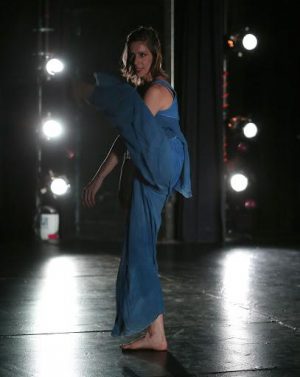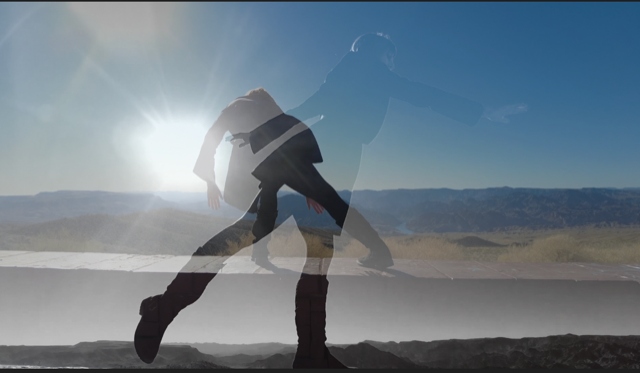“By committing to decolonizing practices in dance education and aligning my own artistic practices with the struggle for racial justice, I do my best to emulate Katherine Dunham and others who fought for our collective liberation. Without them, I would not have the privilege of leading an artful life.”
— Sukie Keita
Dance can be dizzying with its demands, which makes it all the more rewarding.
As an artist, I am perpetually recreating myself, asking new questions, and revealing new layers. While the birth of my creative process is usually a solitary venture, I view my casts as collaborators in the process. Together, we dig into context and share stories, taking turns observing and collaborating to solve whatever problems arise.
View my recent choreography, teaching reel and concert works on Vimeo!



Training

I grew up in Grand Rapids, Michigan studying ballet with Joffrey Ballet principal dancers Charthel Arthur and Robert Estner at the School of the Grand Rapids Ballet where I was exposed to a guest faculty roster that included Cherie Noble, George de la Pena, Trinette Singleton, Mary Martin, Phillip Jerry, Paul Sutherland, Winthrop Corey, and Alexandra Danilova. Tap teacher Don Smith helped me develop my rhythmic sensibility, and jazz studies began with Robert Estner in her teen years. At the University of Michigan, I declared a major in Social Sciences, studying modern dance with Bill DeYoung, Linda Spriggs, and Peter Sparling. I also studied abroad in Germany, experiencing contact improvisation and German expressionist dance. After graduation, I became a scholarship student at Steps On Broadway in New York City, broadening my dance palette with instructors including Elisa Monte, Milton Myers, Michael Vernon, Peff Modelski, Roberta Mathis, and Richard Pierlon. By attending classes and jam sessions at Fareta’s School of Dance and Drum, Dancespace in Soho, and the dance floors of lower Manhattan, I discovered a voice that was distinctly different from what I experienced in my upbringing. Out of a motive to deepen my understanding of American dance, the Africanist Aesthetic, and my own route toward liberation, I began to study Katherine Dunham’s holistic technique in 2000 with master and certified instructors Penny Godboldo, Keith Williams, Vanoye Aikens, Rachel Tavernier, Patricia Wilson, Albirda Rose, and Halifu Osumare, traveling to the Dunham Technique Seminar in East St. Louis for several years before seeking certification to teach. Earning my MFA at the University Of Arizona School Of Dance, I had the opportunity to work with many exciting artists including Susan Quinn, Michael Williams, Melissa Lowe, John Wilson, Mia Michaels, and Ronald K. Brown. On a continuing basis, I continued my study of African and African diasporic dance forms with teachers including Ojeya Cruz Banks, Fara Tolno, Youssouff Koumbassa, Djeneba Sako, Rosangela Silvestre, Rujeko Dumbutshena, and others.
Performance

As a senior company member of the Grand Rapids Ballet, I had the opportunity to appear in classical ballets including La Fille Mal Gardee, Coppelia, Sleeping Beauty, as well as modern ballet classics like Marathon and Gaite Parisienne. My early years dancing in New York City led to showcase performances at Steps and Off-Broadway, a nationally distributed fitness video, a feature in Whitney Houston’s Step By Step video, and an appearance on Good Morning America. Returning to Michigan, I worked with Terri Vaughn and Dawn MacIlhargey-Wigert of InSync Dance Theatre and following graduate school, I danced with numerous Arizona-based companies including O-T-O Dance Theatre (formerly Orts Theatre of Dance), New Articulations, Thom Lewis Dance, Flam Chen, and Zuzi Dance Theatre. Since then, I have maintained my momentum, performing in works by Brooke Melton Hughes, Zari Leon, Leanne Schmidt, Jenny Showalter, Carley Conder, Suzy Guarino-Hall, Kevin Godfrey-Chevalier, and Jenefer Miller.

Artistic Statement
Embracing change and surrendering control comprises the hardest work we do as humans. Working things out on the dance floor is more than just a colloquial phrase. As our bodies shift and bend, we create opportunities to sort out our differences and honor our interdependence. Social engagement paired with action and expression comprises my vision of dance. Dancers should not only look like the rest of the world; their creative energy should be integral to the development of our work.
Seeking new perspectives allows me to grow and challenge myself, a vital practice in an artist’s life. I develop much of my material through task-based experimentation and improvisation, delving into questions about the sort of society in which I would like to live. My preferences for movement reflect my eclectic dance training, which started in classical ballet, jazz, and rhythm tap, and expanded into modern dance and dances of the African diaspora.
Within the performance of an 11-minute dance, my material may traverse popular, classical, and contemporary dance lexica. I attempt to accomplish this in a manner that still honors our distinct cultures and traditions. An anthropological lens has led me to rigorously question colonized perspectives in the field of dance. I recognize how important it is to enter diverse dance communities with love, a capacity to listen, and an understanding of my role and perception as a person of intersecting identities.
My latest work is a short dance film. When the Eye Begins to See (T. Roethke) is a testament to the quickening pace of my creativity as I began to incorporate what I learned through a period of struggle. When we no longer deny the “yes within ourselves (A. Lorde),” we will know who we are and what we can accomplish.
The synergistic nature of musical theatre, in which I have participated since I was a teen, represents a space of great possibility. There, jazz dance lives in full color, manifesting its many styles, eras, and influences. While most of my recent work has been in the realm of concert dance, I have also choreographed college theatre productions including Jerome Robbins’s West Side Story and Roger’s and Hammerstein’s Oklahoma! These gave me insight into the task of disguising performativity so that movement appeared to come straight from the character’s souls.
Want to learn more about Dunham Technique, in particular? Here are some resources:
- The Institute for Dunham Technique Certification: https://www.dunhamcertification.org
- Dunham’s Data: Katherine Dunham and Digital Methods for Dance Historical Inquiry: https://www.dunhamsdata.org
Artist Services:
- Public Speaking
- Choreography
- Artist Residencies
- Concert Dance Production
- Dance Adjudication
- Concert Dance Curation
- Grant Writing
